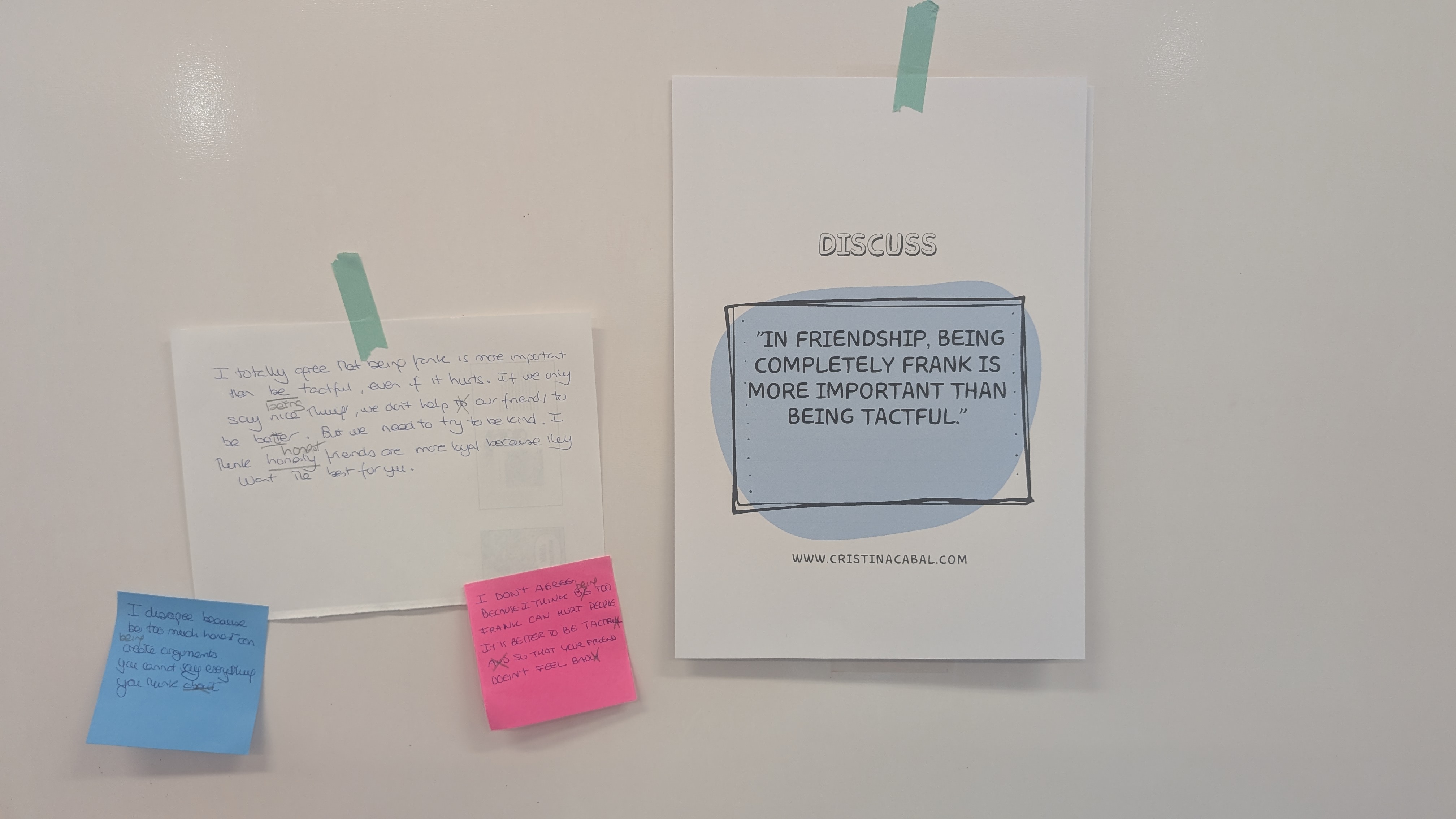Gallery walks must be one of my favourite dynamics. If we add speaking and writing, we have the whole package.
This activity takes something as simple as learning personality adjectives and turns it into an engaging speaking and writing task. The goal is for my students not just to memorize words like arrogant, generous, or shy—but to use them to express opinions and challenge ideas.
So in a nutshell, these are the steps to follow.
Materials: Posters (use mine if you wish), Functional language, Blue-tack or cello-tape, Optional post-it notes
-
REVISING: We start by revising personality adjectives. It’s the vocabulary we’re working on, so students already have a clear focus.
-
POSTERS. Posters with controversial statements, all using personality adjectives, are up on the walls. These are the ones I have used for this activity. You are welcome to use them.
-
Round 1. Gallery Walking. Students walk around the room in pairs or threes, reading the controversial statements and discussing whether they agree or disagree with each statement. You might want to write on the board some functional language to express opinion.(link to photocopy above)
-
Round 2: Write it down. Back at their seats, each student, individually, chooses one statement they agree or disagree with and writes about 70–90 words explaining why they agree or disagree — encourage them to use personality adjectives in their writing. They then stick it next to the poster.
- First side note: ask them to use their best handwriting. You know what I am talking about, don’t you? Sometimes reading students’ handwriting is like trying to decode ancient hieroglyphics!
- Second side note: yes, after this first round, you should walk around reading what they have written and correcting mistakes. I am afraid this is our job, too.
-
Round 3: Writing. React and respond. Students go around again, this time reading their classmates’ post-its. Then, they add a response—agreeing or disagreeing with their peer’s opinion, explaining why. Note: a couple of sentences would be enough this time.
Note: For Round 3, I give my students post-it notes in different colours. It never hurts to add a bit of colour to life.

